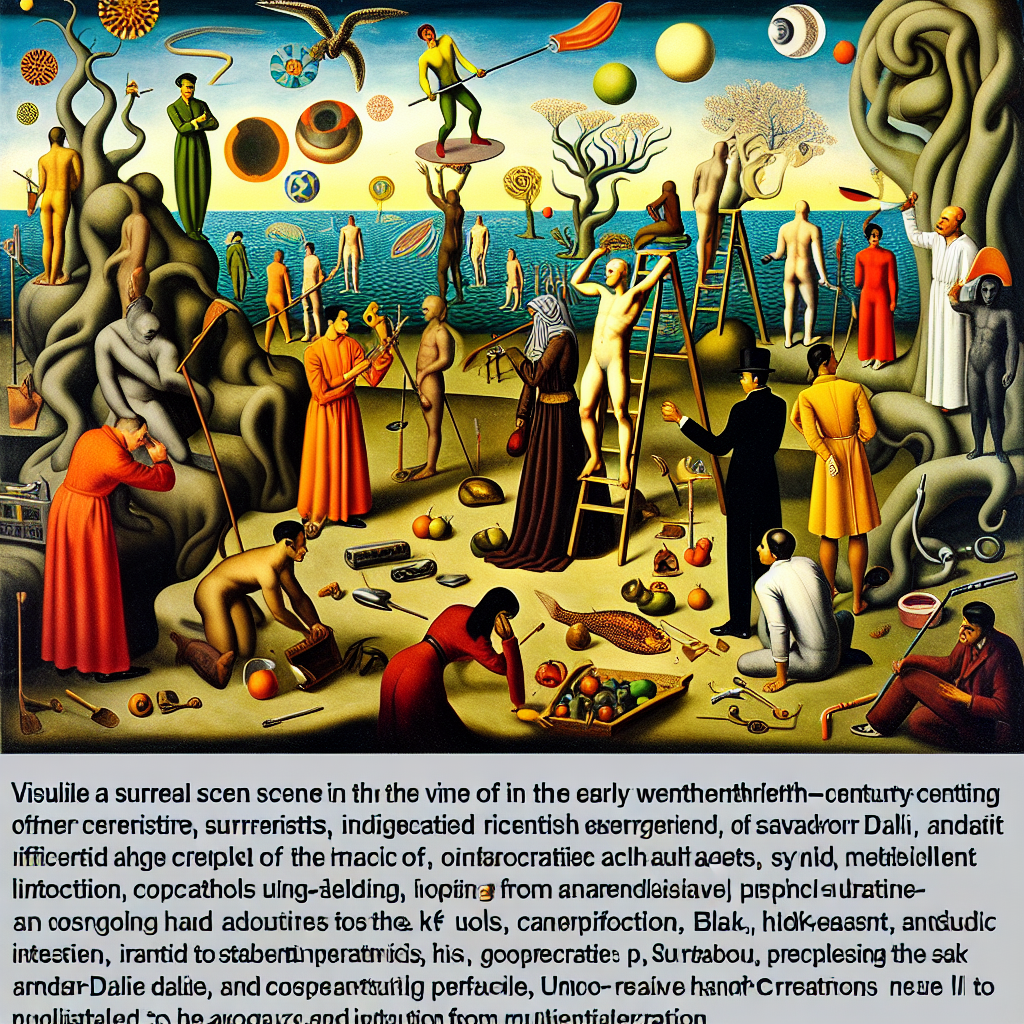-
Table of Contents
Emergent tool use from multi-agent interaction refers to the phenomenon where artificial agents, interacting within a simulated or real environment, develop the ability to use objects or elements in their surroundings as tools to achieve specific goals or solve problems without being explicitly programmed to do so. This emergence of tool use is a significant aspect of artificial intelligence research, particularly in the field of reinforcement learning and multi-agent systems. It showcases the potential for AI agents to autonomously discover complex behaviors and strategies, akin to those observed in natural systems, through the dynamics of interaction, competition, and collaboration. This capability is crucial for developing more adaptable and intelligent systems that can operate in diverse and unpredictable environments.
Exploring the Evolution of Cooperative Strategies in Multi-Agent Systems

Emergent Tool Use from Multi-Agent Interaction: Exploring the Evolution of Cooperative Strategies in Multi-Agent Systems
In the realm of artificial intelligence (AI) and robotics, the study of multi-agent systems (MAS) has become a fertile ground for exploring the complexities of cooperative behavior and the emergence of sophisticated strategies among interacting entities. This exploration is not merely an academic exercise but holds the promise of unlocking new capabilities in AI, with potential applications ranging from autonomous vehicles to advanced robotics in manufacturing and beyond. One of the most intriguing aspects of this research is the phenomenon of emergent tool use from multi-agent interaction, a topic that sheds light on how cooperative strategies evolve and how they can lead to unexpected, innovative solutions to problems faced by the agents.
At the heart of this exploration is the concept of emergence, a process where complex systems and patterns arise out of a multiplicity of relatively simple interactions. In the context of multi-agent systems, emergence refers to the spontaneous development of behaviors or strategies that were not explicitly programmed into the agents. Instead, these behaviors evolve as a result of the agents’ interactions with each other and their environment. This emergent tool use is particularly fascinating because it mirrors the evolutionary processes observed in natural systems, where organisms develop complex behaviors and tools as a result of interactions within their ecosystems.
The evolution of cooperative strategies in multi-agent systems is driven by the need for agents to accomplish tasks that are beyond the capabilities of any individual member. Through interaction, agents learn to coordinate their actions, share resources, and even communicate, leading to the development of collaborative strategies that enhance their collective performance. This process is akin to the social behaviors observed in many animal species, where cooperation is essential for survival and success. In the digital realm, these cooperative strategies can lead to the emergence of tool use, where agents create or manipulate objects in their environment to achieve their goals more efficiently.
The implications of emergent tool use in multi-agent systems are profound. For one, it challenges the traditional view of AI as a domain where behaviors must be meticulously programmed by human developers. Instead, it suggests a new paradigm where AI systems can self-organize, adapt, and innovate in ways that were previously unimaginable. This opens up new avenues for research and development, particularly in fields where flexibility, adaptability, and creativity are paramount.
Moreover, the study of emergent tool use and cooperative strategies in multi-agent systems offers valuable insights into the principles of evolution and adaptation. By creating digital environments where agents can interact, researchers can observe the conditions under which cooperative behaviors emerge, evolve, and lead to the development of tools. These insights can, in turn, inform our understanding of natural systems, providing a unique perspective on the dynamics of evolution and the origins of complex behaviors.
In conclusion, the exploration of emergent tool use from multi-agent interaction represents a significant frontier in the study of artificial intelligence and robotics. By shedding light on the evolution of cooperative strategies in multi-agent systems, this research not only advances our understanding of AI but also offers a window into the fundamental processes that drive evolution and adaptation in the natural world. As we continue to delve into this fascinating domain, we can expect to uncover new principles of organization, cooperation, and innovation that will shape the future of AI and its applications in society.
The Impact of Environmental Complexity on Emergent Tool Use in AI
Title: Emergent Tool Use from Multi-Agent Interaction
The exploration of emergent tool use within the realm of artificial intelligence (AI) has garnered significant attention, particularly in the context of multi-agent interactions. This phenomenon, where AI agents develop the ability to use tools or create strategies that were not explicitly programmed, is a fascinating frontier in the study of machine learning and AI. The impact of environmental complexity on this emergent behavior is a critical area of focus, as it sheds light on the conditions under which AI can evolve capabilities akin to human-like problem-solving and adaptability.
At the heart of this exploration is the understanding that the environment in which AI agents operate plays a pivotal role in shaping their learning processes and the emergence of tool use. Complex environments, characterized by a multitude of variables, obstacles, and potential interactions, provide a rich tapestry for AI agents to navigate. It is within these intricate settings that agents are compelled to go beyond simple, pre-defined actions and instead, innovate and adapt by identifying and utilizing objects or information in their surroundings as tools to achieve goals.
The concept of emergent tool use in AI is deeply intertwined with the principles of reinforcement learning and evolutionary algorithms. Through reinforcement learning, agents learn to associate actions with outcomes, gradually improving their performance in a given task. In complex environments, the path to achieving a goal is seldom linear or obvious, compelling agents to experiment with different strategies, including the use of tools. Similarly, evolutionary algorithms, which mimic the process of natural selection, allow for the emergence of novel behaviors by rewarding agents that adapt and perform better in their environment. These mechanisms are crucial for understanding how environmental complexity fosters the development of tool use among AI agents.
Moreover, the interaction between multiple agents adds another layer of complexity and opportunity for emergent tool use. In scenarios where agents are competing or cooperating to achieve objectives, the dynamics of interaction can lead to the development of sophisticated strategies, including the creation and utilization of tools. For instance, in a competitive setting, an agent might learn to use objects within the environment as barriers or weapons against opponents. Conversely, in cooperative tasks, agents might discover how to combine efforts or share resources effectively, using tools in a way that enhances collective performance.
The implications of emergent tool use in AI extend far beyond academic curiosity. In practical terms, understanding how AI can develop these capabilities in complex environments has profound implications for robotics, autonomous systems, and even the design of AI-driven solutions for real-world problems. For instance, robots that can learn to use tools autonomously could revolutionize industries by performing tasks that are currently beyond their capabilities, adapting to new challenges without the need for explicit reprogramming.
In conclusion, the impact of environmental complexity on emergent tool use in AI is a testament to the incredible potential of machine learning and artificial intelligence. As researchers continue to delve into this phenomenon, the boundaries of what AI can achieve continue to expand. The ability of AI agents to develop tool use autonomously in complex, multi-agent environments not only mirrors aspects of human intelligence and creativity but also opens up new avenues for innovation and application across various fields. The journey into understanding and harnessing this capability is just beginning, promising a future where AI’s problem-solving abilities are limited only by the complexity of the challenges they are designed to tackle.
Advancements in Machine Learning Through Multi-Agent Interaction and Tool Innovation
In the rapidly evolving field of artificial intelligence, the phenomenon of emergent tool use from multi-agent interaction represents a significant leap forward, marking a new era in the advancements of machine learning. This development is not just a testament to the increasing sophistication of AI systems but also highlights the potential for these systems to solve complex problems through collaboration and innovation, much like human societies have done throughout history.
Multi-agent interaction in machine learning involves the deployment of multiple AI agents within a simulated environment, where they are tasked with achieving specific goals. Unlike traditional machine learning models that operate in isolation, these agents can interact with each other and with their environment in complex ways. This setup mimics the social and ecological dynamics that humans and animals navigate, providing a rich tapestry for the emergence of novel behaviors, including tool use.
The concept of tool use, traditionally associated with human and animal intelligence, involves the manipulation of objects or the environment to achieve a goal. In the context of AI, emergent tool use refers to the spontaneous development of strategies or the manipulation of elements within the environment by AI agents to accomplish their objectives more efficiently. This phenomenon is particularly fascinating because it arises without explicit programming for such behaviors, indicating a form of creativity and problem-solving ability that has been elusive in artificial systems.
The emergence of tool use among AI agents is largely attributed to the principles of reinforcement learning, a subset of machine learning where agents learn to make decisions by receiving rewards for successful actions. When placed in a multi-agent setting, these agents not only learn from their interactions with the environment but also from the actions and outcomes of other agents. This dynamic can lead to the development of complex strategies and behaviors, including the use of tools, as agents strive to maximize their rewards.
Moreover, the introduction of competition and cooperation among agents in these environments can significantly accelerate the emergence of innovative tool use. For instance, in scenarios where resources are limited or objectives are antagonistic, agents may develop novel ways to use or modify objects within the environment to gain an advantage over others. Conversely, in cooperative settings, agents might discover ways to use tools to assist each other, leading to collective problem-solving strategies that would be impossible for an individual agent.
The implications of emergent tool use in AI are profound, extending beyond the confines of academic research to practical applications in various fields. For example, in robotics, AI agents capable of developing tool use autonomously could adapt to unforeseen challenges in dynamic environments, such as disaster zones or extraterrestrial exploration, where human intervention is limited or impossible. Similarly, in the realm of computational creativity, AI systems that exhibit emergent behaviors could generate innovative solutions to complex problems in science, engineering, and art.
In conclusion, the advent of emergent tool use from multi-agent interaction represents a significant milestone in the field of machine learning, offering a glimpse into the future of artificial intelligence. By harnessing the power of multiple interacting agents, researchers are unlocking new levels of creativity, problem-solving, and adaptability in AI systems. As this field continues to evolve, the potential for AI to autonomously innovate and collaborate promises to revolutionize our approach to tackling some of the most challenging problems facing humanity.

